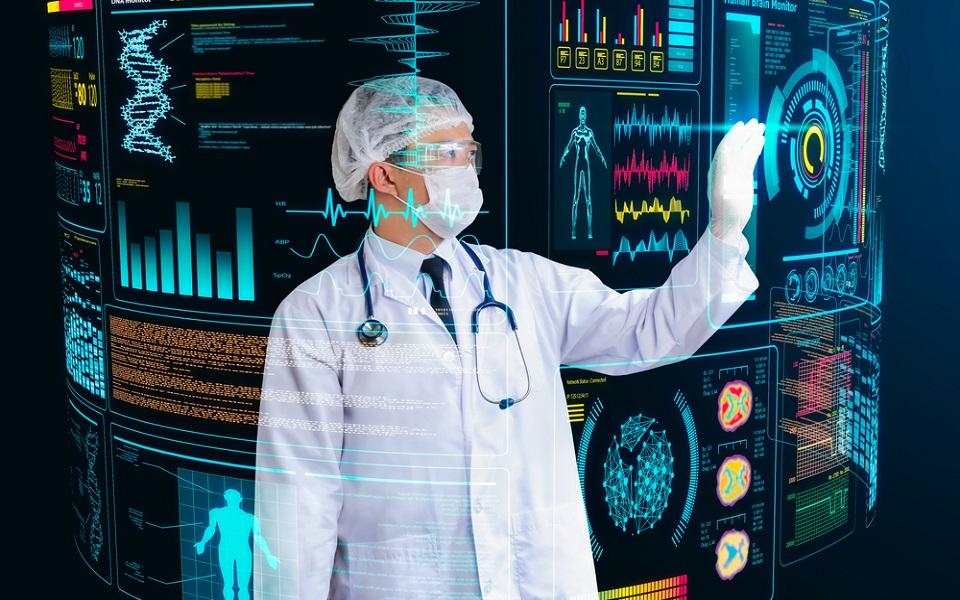Sponsored
5G In Healthcare: Enhancing Telemedicine’s, Remote Monitoring And Real- Time Sharing For Better Patient Outcome

5G or fifth-generation wireless technology is the latest upgrade in the mobile broadband networks. It provides faster speeds, increased connectivity, and ultra-low latency compared to previous cellular technologies. Some of the key features of 5G include download speeds that are 10 to 100 times faster than 4G LTE networks, ability to connect millions of devices simultaneously, and latency as low as 1 millisecond. These capabilities of 5G open up new possibilities for improving healthcare systems and delivering better patient care.
Enabling Telemedicine and Remote Patient Monitoring
One of the major ways 5G In Healthcare can benefit is by facilitating telemedicine and remote patient monitoring on a large scale. The high speeds and low latency of 5G networks allow real-time HD video calls between doctors and patients located anywhere. This enables virtual consultations and remote diagnosis of patients in rural or hard to reach areas. It can help overcome issues like lack of access to specialists. 5G also supports advanced applications like remote home monitoring of patients with chronic diseases. Sensors can constantly stream patient vitals to doctors for timely interventions without requiring hospital visits. This improves health outcomes while reducing costs for both patients and providers. The high bandwidth of 5G ensures seamless streaming of critical health data even during peak traffic periods.
Powering mHealth Apps and Wearable Devices
The rising popularity of mHealth apps and wearable medical devices creates a huge opportunity for 5G in healthcare. Wearables and IoT devices used for remote monitoring generate huge amounts of continuous health data which needs ultra-fast and reliable connectivity for real-time analysis. 5G is perfect for supporting the massive IoT required to power the next generation of connected healthcare tools. It allows seamless integration of a wide range of vital sign monitoring wearables, health trackers and mobile medical apps. Doctors can access comprehensive patient data from any location for predictive diagnosis and preventive care. This form of pervasive healthcare monitoring supported by 5G networks has the potential to revolutionize chronic disease management and facilitate early detection of health issues.
Augmented Reality and Virtual Reality Applications
Augmented reality (AR) and virtual reality (VR) are innovative technologies that can enhance healthcare training and delivery when combined with 5G. AR and VR require high bandwidth, low latency networks for smooth, immersive experiences. 5G is ideally suited to support AR and VR applications in healthcare. Some potential uses of AR/VR in healthcare enabled by 5G include complex surgery simulations for medical students, virtual treatment planning in radiology, remote expert guidance during procedures, and exposure therapy for patients. These applications can help improve skills, reduce medical errors and expand access to specialized care even in remote locations. 5G is making such mission critical AR/VR applications in healthcare a reality.
Enhanced Imaging and Image Delivery
5G in healthcare promises to enhance medical imaging capabilities and improve diagnosis. Applications like high-definition ultrasound imaging, high resolution CT and MRI scans generate massive image files that need fast, reliable networks for seamless transfer between multiple specialized care providers. 5G fulfills this need with speeds that are 20-50 times faster than current 4G LTE networks. It allows near instantaneous transmission of high definition medical images across large areas. This facilitates quick sharing of scans between primary care doctors and medical experts in different locations for remote consultation. Tele-radiology services become highly feasible with 5G improving teleradiology workflows. Fast transfer of scans reduces diagnostic time taken and enables expedited treatment decisions.
Improving Hospital Operations
Finally, 5G holds potential to enhance hospital operations and management in important ways. Applications of 5G within hospitals could involve automation of workflows, implementation of IoT-based asset tracking systems and use of robotic process automation tools. For example, 5G enables real-time location systems to seamlessly track costly medical equipment as well as patients inside large healthcare facilities. It reduces loss of assets while improving patient safety. 5G networks also facilitate use of automated guided vehicles for logistics operations within hospitals. This streamlines supply chain management and frees up staff for critical duties. Overall, 5G promises to bring more connectivity, automation and optimized processes into healthcare environments, improving staff efficiency and quality of care.
5G in healthcare offer capabilities that can truly revolutionize various aspects of healthcare delivery. Right from enabling widespread telehealth and remote patient monitoring to powering mHealth innovations as well as enhancing medical imaging capabilities - 5G has tremendous potential to improve access to care and health outcomes. When combined with technologies like AI, IoT, AR/VR and robotic automation, 5G becomes an accelerator helping transform healthcare systems globally. While challenges remain in terms of deployment costs and optimization of applications, 5G undoubtedly represents an exciting frontier that can boost healthcare productivity, efficiency and quality of services in the coming years.
Get more insights on –5G In Healthcare
About Author:
Ravina Pandya, Content Writer, has a strong foothold in the market research industry. She specializes in writing well-researched articles from different industries, including food and beverages, information and technology, healthcare, chemical and materials, etc. (https://www.linkedin.com/in/ravina-pandya-1a3984191)
Categories
Read More
Fashion is a form of self-expression, and what better way to showcase your personality than with vibrant, colorful wigs? Whether you're drawn to soft pastels, neon hues, or bold rainbow shades, these wigs open up endless possibilities for creativity and confidence. Embrace the Power of Color A hairstyle can completely transform your look, but colorful wigs take it a step further. They allow...

With the instantly changing manner in online digital selling, at which each individual please click is important and even site visitor proposal is without a doubt the best policy, marketing with email has generated once more to provide a foundation technique for organisations wanting to build up permanent links utilizing prospects. Email Marketing agency To achieve success...



